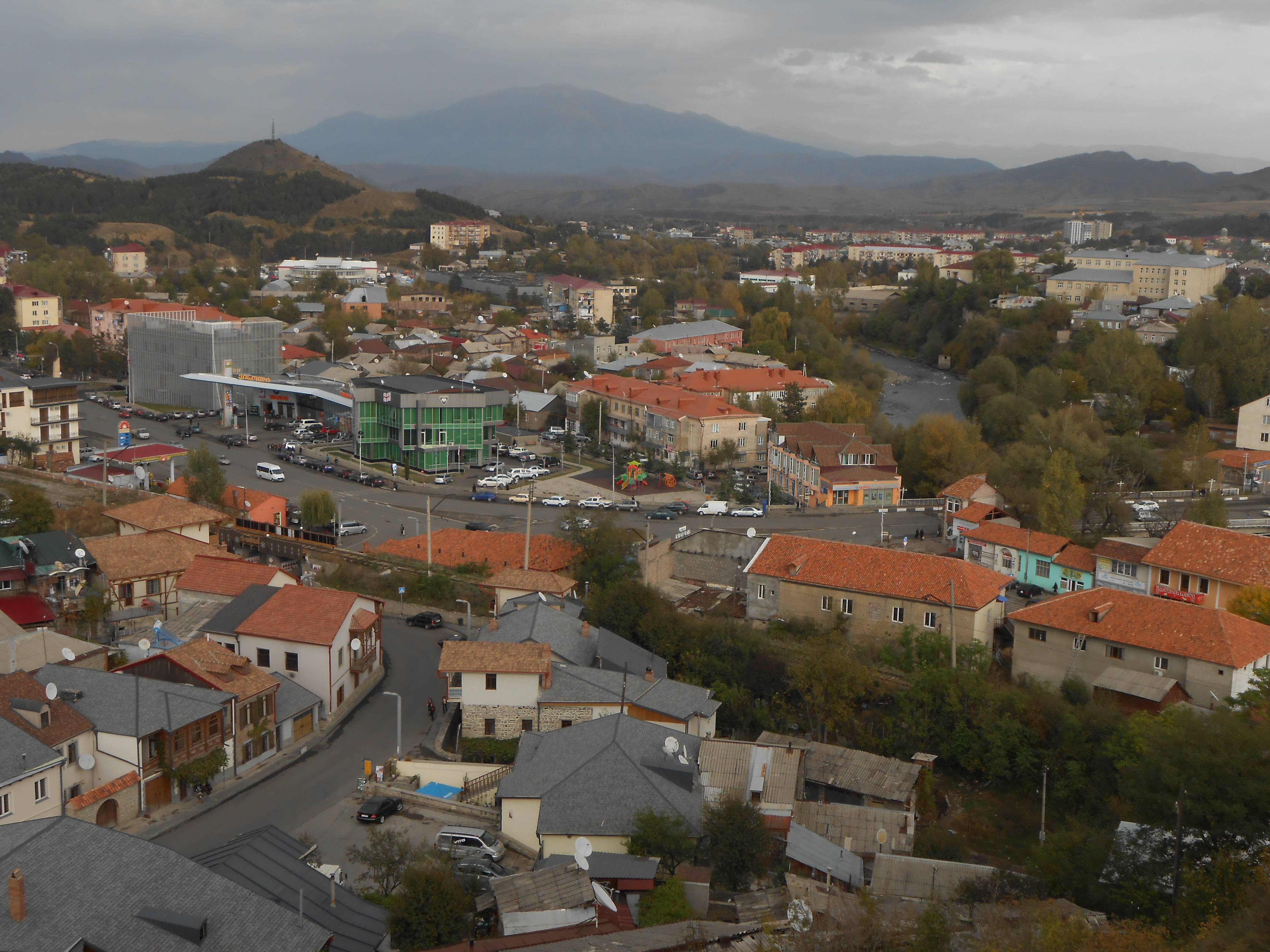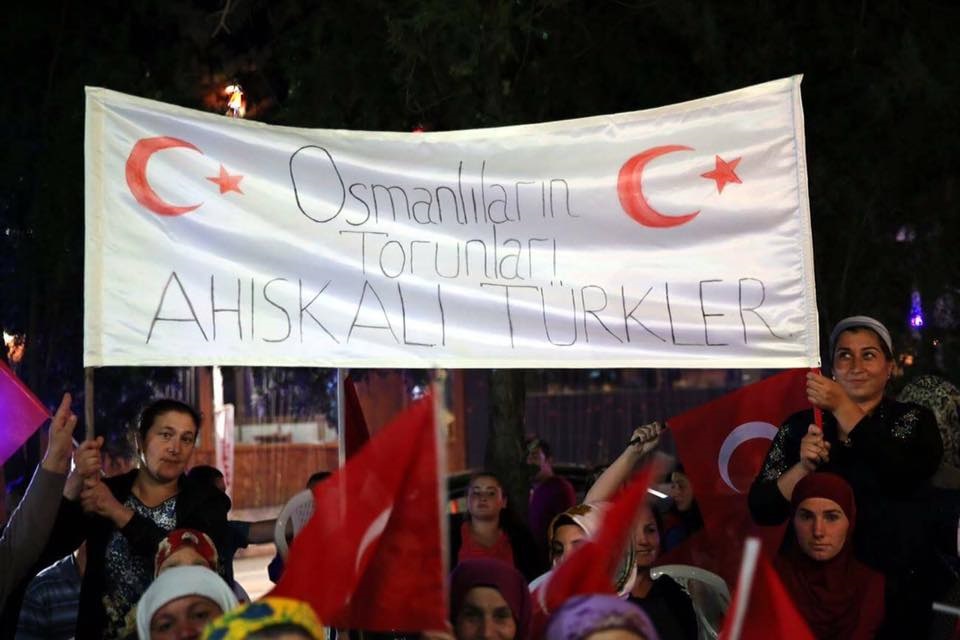|
Axısxa
Axısxa is a village and municipality in the Sabirabad Rayon of Azerbaijan. It has a population of 1,373. Etymology The village of Axısxa is named after the Georgian city of Akhaltsikhe, which was formerly known as Axısxa in Azerbaijani. This is because the population of the village are Meskhetian Turks, who were deported Deportation is the expulsion of a person or group of people by a state from its Sovereignty, sovereign territory. The actual definition changes depending on the place and context, and it also changes over time. A person who has been deported or ... from Akhaltsikhe to Central Asia in 1944. In the 1960s, they returned to the Caucasus and founded this settlement, which they named after their former hometown. References * Populated places in Sabirabad District {{Sabirabad-geo-stub ... [...More Info...] [...Related Items...] OR: [Wikipedia] [Google] [Baidu] |
Akhaltsikhe
Akhaltsikhe ( ka, ახალციხე ), formerly known as Lomsia ( ka, ლომსია ), is a small city in Georgia's southwestern region () of Samtskhe–Javakheti. It is the administrative center of the Akhaltsikhe Municipality and the Samtskhe–Javakheti region. It is situated on both banks of the small river Potskhovi (a left tributary of the Kura), which divides the city between the old city in the north and new in the south. The 9th-century Akhaltsikhe (Rabati) Castle, which was recently restored, is located in the old part of the city. It is one of the main attractions of the Samtskhe–Javakheti region, along with Vardzia, Vale, Okrostsikhe and Zarzma. Toponymy Akhaltsikhe is the Georgian name of the town, which literally means "new fortress". It is attested in Arabic sources as (and ), in Persian as (also spelled as ), and in Turkish sources as . The Azerbaijani village of Axısxa is also named after it, due to the population of the village origin ... [...More Info...] [...Related Items...] OR: [Wikipedia] [Google] [Baidu] |
Administrative Divisions Of Azerbaijan
Azerbaijan is administratively divided into 67 districts () and 11 cities () that are subordinate to the Republic. Out of these districts and cities, 7 districts and 1 city are located within the Nakhchivan Autonomous Republic. The districts are further divided into Municipalities of Azerbaijan, municipalities (). Additionally, the districts of Azerbaijan are grouped into 14 Economic regions of Azerbaijan, Economic Regions (). On 7 July 2021, President of Azerbaijan Ilham Aliyev signed a decree "On the new division of economic regions in the Republic of Azerbaijan". Administrative divisions Contiguous Azerbaijan The list below represents the districts of contiguous Azerbaijan. For those of the Nakhchivan exclave, see further below. Nakhchivan Autonomous Republic The seven districts and one municipality of the Nakhchivan Autonomous Republic are listed below. Economic regions Nagorno-Karabakh The territory of former Nagorno-Karabakh Autonomous Oblast presently ... [...More Info...] [...Related Items...] OR: [Wikipedia] [Google] [Baidu] |
Sabirabad Rayon
Sabirabad District () is one of the 66 districts of Azerbaijan. Located in the centre of the country, it belongs to the Mil-Mughan Economic Region. The district borders the districts of Saatly, Imishli, Kurdamir, Hajigabul, Salyan, Bilasuvar, and the city of Shirvan. Its capital and largest city is Sabirabad. As of 2020, the district had a population of 178,800. History The area of Sabirabad is rich with ancient monuments and settlements. As a result of the excavation in the district, ancient necropolis as well as settlements which belong to V-I, V-II, and I B.C were found in Surra, Javad, Abdulyan, Garatepe, Guruzma, Garagashil, Bulagli, Zangana and Galagayin. Materials that were found in the “Shahargah” place of the village show that the ancient findings belong to the 11th-12th centuries. Historically, some nations attacked Mughan lands known as “Khaver Zemin”, “Guneshli land”. However, all those pressures were overcome. Since that time, “Khaver Zamin” re ... [...More Info...] [...Related Items...] OR: [Wikipedia] [Google] [Baidu] |
Azerbaijan Time
Azerbaijan Time () is the standard time zone in Azerbaijan, four hours ahead of UTC ( UTC+04:00). The daylight saving time adjustment, Azerbaijan Summer Time (), was one hour ahead at UTC+05:00; it was introduced in 1997 and discontinued in March 2016. Azerbaijan Time is the same as Samara Time (Russia), United Arab Emirates Standard Time, Georgia Time, Armenia Time and Seychelles Time. History Azerbaijan, formerly the Azerbaijan Soviet Socialist Republic (Azerbaijan SSR), adhered to timekeeping regulations instituted by the Soviet Union The Union of Soviet Socialist Republics. (USSR), commonly known as the Soviet Union, was a List of former transcontinental countries#Since 1700, transcontinental country that spanned much of Eurasia from 1922 until Dissolution of the Soviet .... In 1930, the Council of People’s Commissars of the USSR implemented " Decree Time," which mandated a one-hour advancement of standard time across the entire Soviet territory. This mov ... [...More Info...] [...Related Items...] OR: [Wikipedia] [Google] [Baidu] |
Azerbaijan
Azerbaijan, officially the Republic of Azerbaijan, is a Boundaries between the continents, transcontinental and landlocked country at the boundary of West Asia and Eastern Europe. It is a part of the South Caucasus region and is bounded by the Caspian Sea to the east, Russia's republic of Dagestan to the north, Georgia (country), Georgia to the northwest, Armenia and Turkey to the west, and Iran to the south. Baku is the capital and largest city. The territory of what is now Azerbaijan was ruled first by Caucasian Albania and later by various Persian empires. Until the 19th century, it remained part of Qajar Iran, but the Russo-Persian wars of Russo-Persian War (1804–1813), 1804–1813 and Russo-Persian War (1826–1828), 1826–1828 forced the Qajar Empire to cede its Caucasian territories to the Russian Empire; the treaties of Treaty of Gulistan, Gulistan in 1813 and Treaty of Turkmenchay, Turkmenchay in 1828 defined the border between Russia and Iran. The region north o ... [...More Info...] [...Related Items...] OR: [Wikipedia] [Google] [Baidu] |
Georgia (country)
Georgia is a country in the Caucasus region on the coast of the Black Sea. It is located at the intersection of Eastern Europe and West Asia, and is today generally regarded as part of Europe. It is bordered to the north and northeast by Russia, to the south by Turkey and Armenia, and to the southeast by Azerbaijan. Georgia covers an area of . It has a Demographics of Georgia (country), population of 3.7 million, of which over a third live in the capital and List of cities and towns in Georgia (country), largest city, Tbilisi. Ethnic Georgians, who are native to the region, constitute a majority of the country's population and are its titular nation. Georgia has been inhabited since prehistory, hosting the world's earliest known sites of winemaking, gold mining, and textiles. The Classical antiquity, classical era saw the emergence of several kingdoms, such as Colchis and Kingdom of Iberia, Iberia, that formed the nucleus of the modern Georgian state. In the early fourth centu ... [...More Info...] [...Related Items...] OR: [Wikipedia] [Google] [Baidu] |
Azerbaijani Language
Azerbaijani ( ; , , ) or Azeri ( ), also referred to as Azerbaijani Turkic or Azerbaijani Turkish (, , ), is a Turkic languages, Turkic language from the Oghuz languages, Oghuz sub-branch. It is spoken primarily by the Azerbaijanis, Azerbaijani people, who live mainly in the Azerbaijan, Republic of Azerbaijan, where the North Azerbaijani Variety (linguistics), variety is spoken, while Iranian Azerbaijanis in the Azerbaijan (Iran), Azerbaijan region of Iran, speak the South Azerbaijani Variety (linguistics), variety. Azerbaijani is the only official language in the Republic of Azerbaijan and one of the 14 official languages of Dagestan (a Federal subjects of Russia, federal subject of Russia), but it does not have official status in Iran, where the majority of Iranian Azerbaijanis, Iranian Azerbaijani people live. Azerbaijani is also spoken to lesser varying degrees in Azerbaijani communities of Georgia (country), Georgia and Turkey and by Azerbaijani diaspora, diaspora communi ... [...More Info...] [...Related Items...] OR: [Wikipedia] [Google] [Baidu] |
Meskhetian Turks
Meskhetian Turks, also referred to as Turkish Meskhetians, Ahiska Turks, and Turkish Ahiskans, (; ka, მესხეთის თურქები ''Meskhetis turk'ebi'') are a subgroup of ethnic Turkish people formerly inhabiting the Meskheti region of Georgia, along the border with Turkey. The Turkish presence in Meskheti began with the Ottoman military expedition of 1578, although Turkic tribes had settled in the region as early as the eleventh and twelfth centuries. Today, the Meskhetian Turks are widely dispersed throughout the former Soviet Union (as well as in Turkey and the United States) due to forced deportations during World War II. At the time, the Soviet Union was preparing to launch a pressure campaign against Turkey, and Joseph Stalin wanted to clear the strategic Turkish population in Meskheti deemed likely to be hostile to Soviet government intentions.. In 1944, the Meskhetian Turks were accused of smuggling, banditry and espionage in collaboration wit ... [...More Info...] [...Related Items...] OR: [Wikipedia] [Google] [Baidu] |
Deportation Of The Meskhetian Turks
The deportation of the Meskhetian Turks () was the forced transfer by the Soviet government of the entire Meskhetian Turk population from the Meskheti region of the Georgian Soviet Socialist Republic (now Georgia (country), Georgia) to Central Asia on 14November 1944. During the deportation, between 92,307 and 94,955 Meskhetian Turks were forcibly removed from 212 villages. They were packed into cattle wagons and mostly sent to the Uzbek Soviet Socialist Republic. Members of other ethnic groups were also deported during the operation, including Hemshin people, Hemshins, bringing the total to approximately 115,000 evicted people. They were placed in Special settlement (Soviet), special settlements where they were assigned to forced labor. The deportation and harsh conditions in exile caused between 12,589 and 50,000 deaths. The expulsion was executed by NKVD chief Lavrentiy Beria on the orders of Premier of the Soviet Union, Soviet Premier Joseph Stalin and involved 4,000 NKVD per ... [...More Info...] [...Related Items...] OR: [Wikipedia] [Google] [Baidu] |




